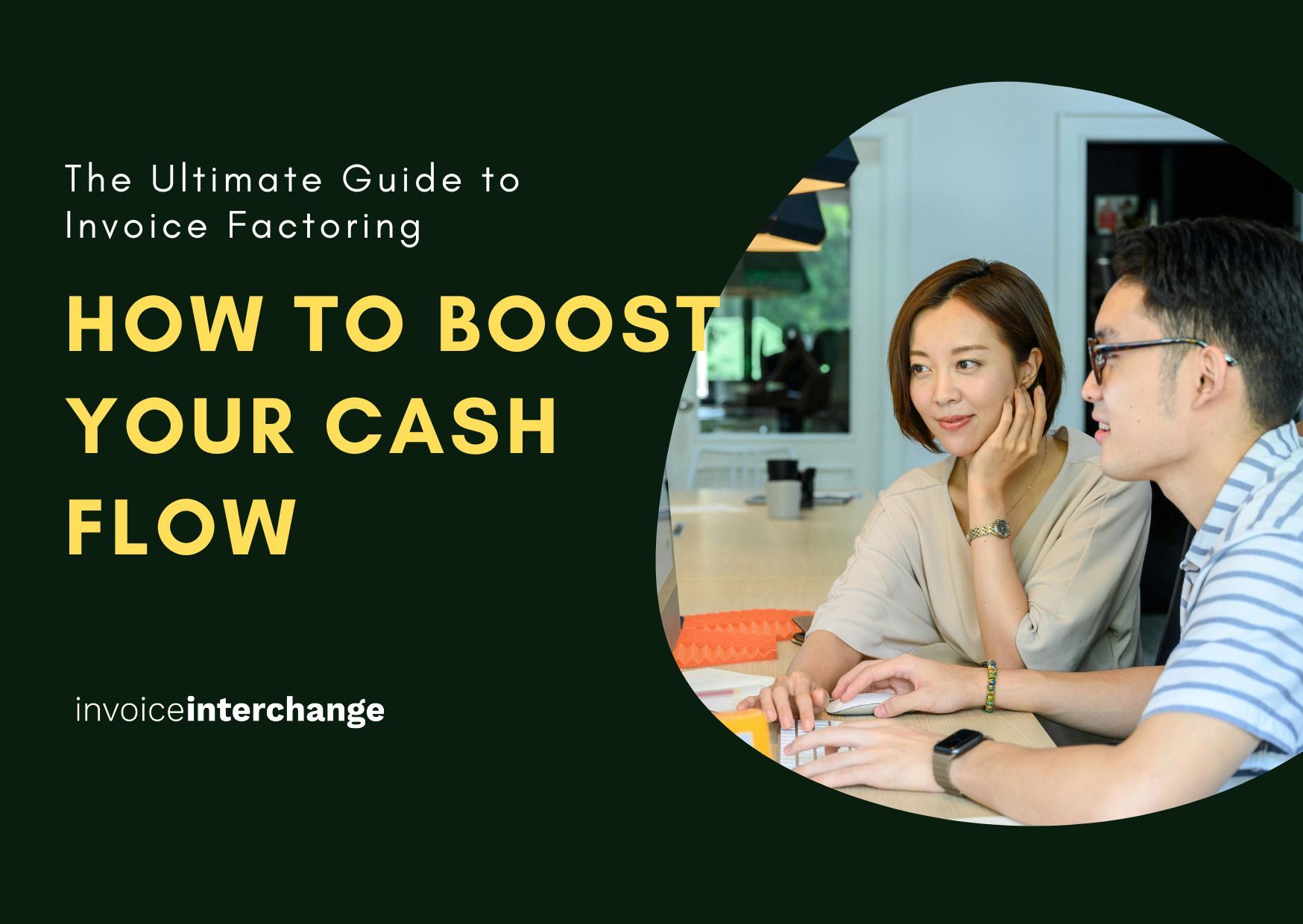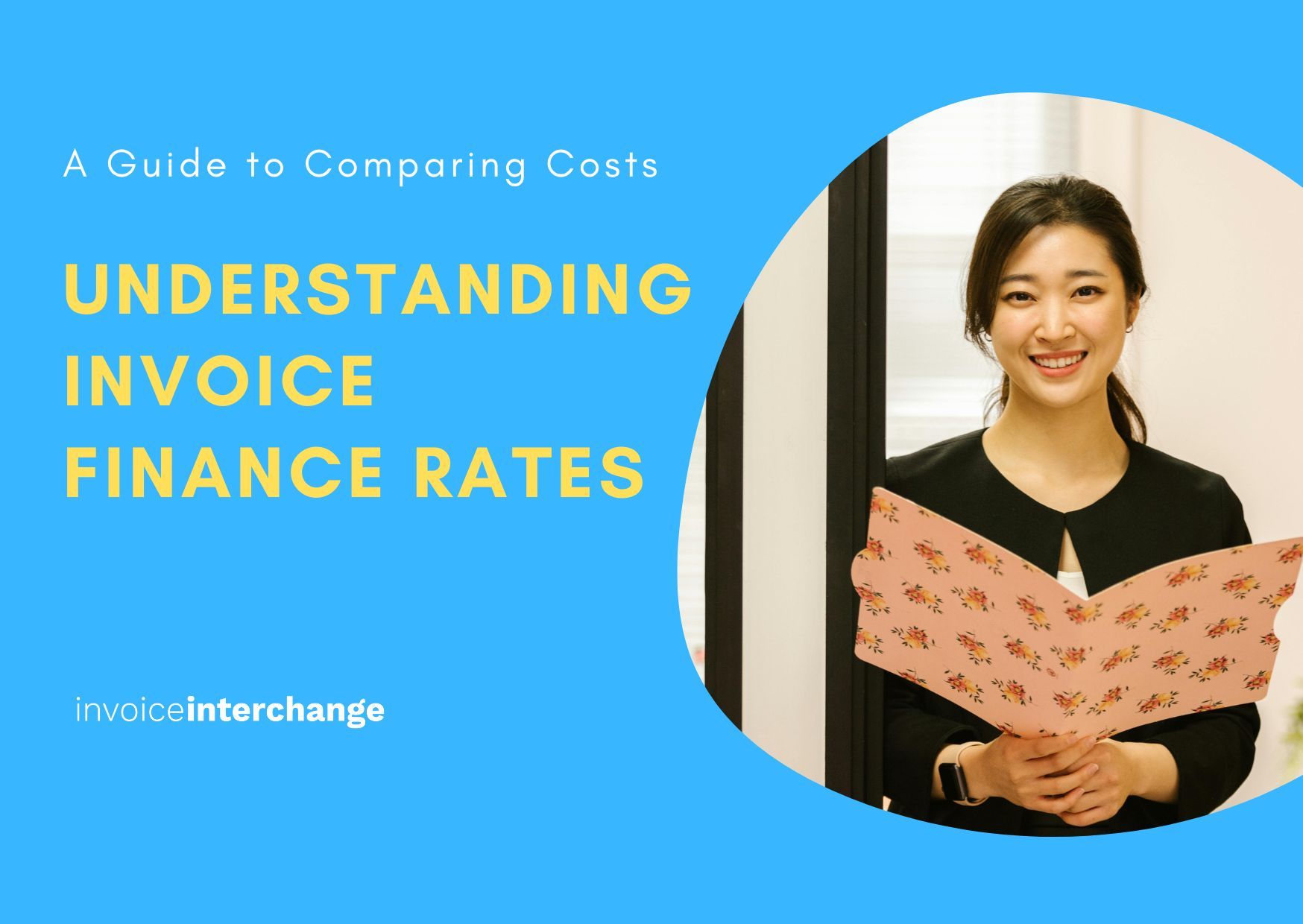
The Ultimate Guide to Invoice Factoring: How to Boost Your Cash Flow
Cash flow is the lifeblood of any business. However, waiting 30, 60, or even 90 days for invoices to be paid can significantly strain your finances. This is where invoice factoring can be a game-changer. Invoice factoring companies play a crucial role in this process by providing businesses with immediate cash in exchange for their outstanding invoices. In this guide, we’ll delve into what invoice factoring is, how it works, its advantages and disadvantages, and how to maximise its benefits for your business.
What is Invoice Factoring?
Invoice factoring, also known as accounts receivable financing, is a financial transaction where a business sells its unpaid invoices to a third party, known as a factor. The invoice factoring company then advances a significant portion of the invoice amount to the business, typically between 70% to 90%. Once the invoice is paid by the customer, the factor releases the remaining balance, minus a fee. Before proceeding, businesses must review and sign a factoring agreement, which outlines the fees, terms, and conditions, including the collection and payment process, and any additional fees involved.
How Does Invoice Factoring Work?
Issuing Invoices: Your business provides goods or services to customers and issues invoices with payment terms.
Selling Invoices: To understand how invoice factoring works, you sell these unpaid invoices to a factoring company.
Receiving an Advance: The factoring company advances a percentage of the invoice total to your business.
Customer Payment: The factoring company collects the payment from your customers.
Balance Payment: Once the customer pays the invoice, the factor deducts their fee and remits the remaining balance to you.
Benefits of Invoice Factoring
Invoice factoring offers several benefits that can significantly enhance a business’s financial health and operational efficiency. These costs can impact the overall benefits of the process. Here are some key advantages:
1. Improve Cash Flow
One of the primary benefits of invoice factoring is the immediate access to cash. Instead of waiting 30, 60, or 90 days for customers to pay, businesses can receive a percentage of the full invoice value, typically 80-90%, within a few days of issuing an invoice. This accelerated cash flow is vital for meeting operational expenses, investing in growth opportunities, and maintaining a buffer for unexpected expenses.
2. No Debt Incurred
Invoice factoring is not a loan. Instead of borrowing money, businesses are selling their receivables. This means there is no debt to repay, and it doesn’t affect the company’s balance sheet or credit rating. This can be particularly advantageous for businesses that may not qualify for traditional financing due to credit issues.
3. Flexible Financing
The amount of funding available through factoring is directly tied to the volume of sales. As your business grows and generates more invoices, the available financing increases. This scalability makes invoice factoring a flexible financing solution that can grow with your business.
4. Easier Approval Process
Factoring companies primarily assess the creditworthiness of your customers, not your business. This makes it easier for businesses with less-than-perfect credit to secure funding. As long as you have a strong customer base with reliable payment histories, you can qualify for invoice factoring. The factoring cost is determined based on the creditworthiness of your customers, which influences the factoring fees, discount rates, and other associated costs.
5. Improved Financial Planning
With a more predictable and stable cash flow, businesses can plan more effectively. Knowing that funds will be available shortly after issuing an invoice helps in budgeting, forecasting, and making strategic decisions with greater confidence.
7. Credit Protection
Some factoring arrangements include credit protection, meaning the factor assumes the risk of non-payment by the customer. This can provide additional peace of mind, knowing that your cash flow will not be impacted by bad debts.
8. Enhances Supplier Relationships
With improved cash flow, businesses can pay their suppliers on time or even early. This can lead to better relationships with suppliers, potential discounts for early payments, and an enhanced reputation for reliability.
9. Competitive Advantage
Having immediate access to working capital can give businesses a competitive edge. They can seize growth opportunities, take on larger projects, or offer better payment terms to customers without worrying about cash flow constraints.
10. Reduce Administrative Tasks
Invoice factoring reduces the administrative burden of chasing payments from customers. It helps businesses focus on their core operations and reduce the stress of managing outstanding invoices.
Types of Invoice Factoring
There are several types of invoice factoring, each catering to different business needs and risk appetites. Understanding the various forms of invoice factoring can help businesses choose the right approach for their financial strategies.
Invoice discounting, on the other hand, differs from invoice factoring in several key ways. Unlike invoice factoring, where the factoring company takes over the responsibility of chasing payment from the Buyer, invoice discounting allows the Seller to maintain control over their sales ledger and customer relationships.
This method is often more confidential and flexible, making it a beneficial solution for businesses looking to improve cash flow without disclosing their financing arrangements to customers. Invoice discounting can be particularly advantageous for companies that have a strong credit control process and prefer to handle their own collections.
Recourse and Non-Recourse Factoring
Two primary categories of invoice factoring are recourse and non-recourse, which differ mainly in terms of risk allocation between the business and the factoring company.
Recourse Factoring
In a recourse arrangement, the business sells its invoices to the factoring company, but retains the risk of non-payment by the customer. If a customer fails to pay an invoice, the business is obligated to repay the factoring company for the advanced funds. This type of factoring generally comes with lower fees, as the factoring company assumes less risk. It is a suitable option for businesses confident in their customers’ ability to pay.
Non-Recourse Factoring
Conversely, non-recourse factoring involves the factoring company assuming the risk of non-payment. When a business sells its invoices under a non-recourse agreement, it is not liable if the customer defaults on payment. This type of factoring provides greater security for the business but typically comes with higher fees, reflecting the increased risk borne by the factoring company. Non-recourse arrangement is ideal for businesses seeking to protect themselves from bad debt losses.
Spot Factoring, Whole Ledger Factoring, and Disclosed Factoring
Apart from recourse and non-recourse factoring, businesses can also choose from spot factoring, whole ledger factoring, and disclosed factoring, each offering different levels of engagement and transparency.
Spot Factoring
Spot factoring, also known as single invoice factoring, allows businesses to sell individual invoices to a factoring company as needed. This flexibility is beneficial for businesses that may not require continuous factoring services but need occasional funding support. Spot factoring enables businesses to manage cash flow on a per-invoice basis without committing to a long-term agreement.
Whole Ledger Factoring
In contrast, whole ledger factoring involves selling all unpaid invoices to a factoring company. This comprehensive approach provides continuous cash flow support and can significantly reduce administrative burdens associated with managing accounts receivable.
Whole ledger factoring is well-suited for businesses with consistent invoicing needs and those seeking a more predictable and streamlined cash flow management process.
Disclosed Factoring
Disclosed factoring involves informing the customer about the factoring arrangement. When invoices are factored under this method, the customer is notified that payments should be made directly to the factoring company. This transparency can facilitate smoother payment processes and can sometimes improve customer relations by providing clarity about payment handling.
Getting the Most Out of Invoice Factoring
To maximise the benefits of invoice factoring, consider the following tips:
Choose the Right Factor:
Look for a factoring company with a good reputation, transparent terms, and industry experience. Compare fees and services to ensure you get the best deal.
Maintain Good Customer Relationships
Clear communication with customers about the factoring arrangement can prevent misunderstandings and ensure smoother collections. Managing invoice payments effectively is crucial to maintaining these relationships and providing a positive customer experience.
Evaluate Costs vs. Benefits
Calculate the cost of factoring against the benefits of improved cash flow. Ensure that the increased cash flow leads to opportunities for growth or cost savings that justify the expense.
Diversify Financing Options
Don’t rely solely on factoring. Explore other financing options such as lines of credit or business loans to diversify your financial strategy.
Invoice financing can be an excellent tool for businesses looking to improve their finance quickly. By understanding how it works, weighing the pros and cons, and implementing best practices, you can leverage invoice factoring to support and grow your business. Remember, the key is to use this financial solution strategically to enhance your operational efficiency and profitability.
InvoiceInterchange, Your Trusted Invoice Finance Partner
At InvoiceInterchange, we offer invoice financing facility via an online platform, helping turn your unpaid invoices into immediate working capital. This means that business owners no longer have to wait for their customers to pay. Our invoice factoring cost is fully transparent. There are only 2 fees, transaction fee and discount fee.
Related Articles

Navigating Cash Flow: The Best Invoice Financing in Singapore for Businesses

Discover the Best Invoice Finance for Startups: Boost Your Cash Flow
